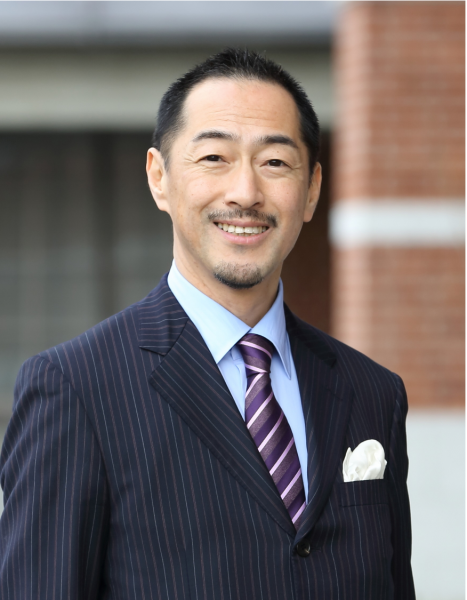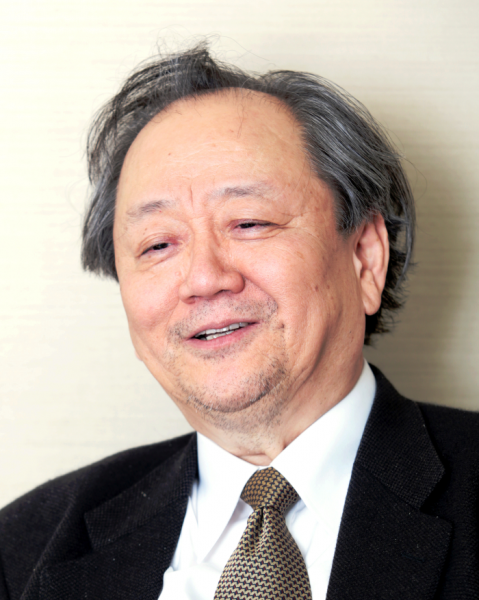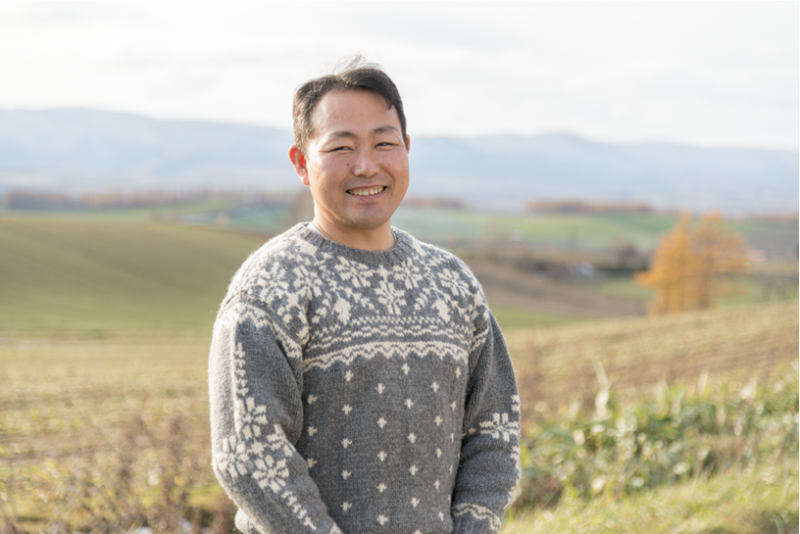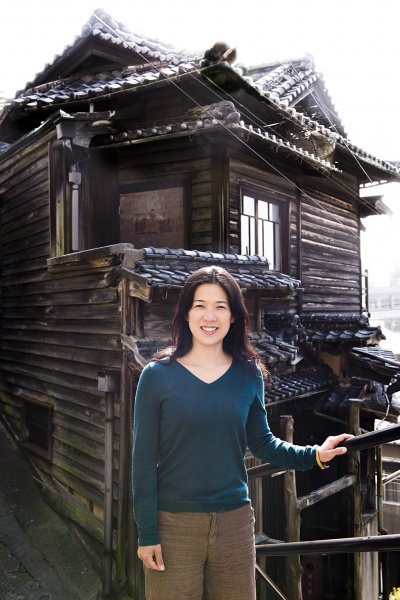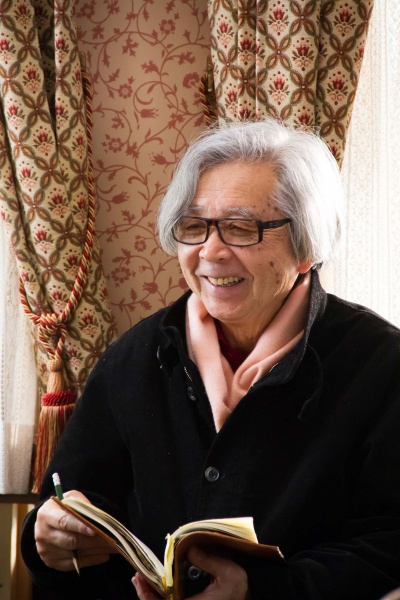Hoping to Save as Many Lives on Mountains as Possible — OHSHIRO Kazue, Diploma in Mountain Medicine
In May 2013, adventurer Miura Yuichiro stood atop the 8,848-meter-high Mt. Everest. Ohshiro Kazue, a medical doctor, had stayed behind at the base camp at an altitude of 5,300 meters. Amid the jubilation after Miura, at eighty, had become the oldest man to climb the mountain in recorded history, she was concerned with the changes in his physical condition.
Miura, having removed his oxygen mask at the summit, lost more stamina than expected. When he began to descend, his legs failed him and he could not get enough energy to propel them. “At the sight of his safe return to the base camp, I was afraid that he would break if I hugged him as I usually do to fellow climbers rejoining me on a mountain. He looked so brave in his weakness and so adorable,” Ohshiro recalls. At that moment she became both relaxed and relieved.
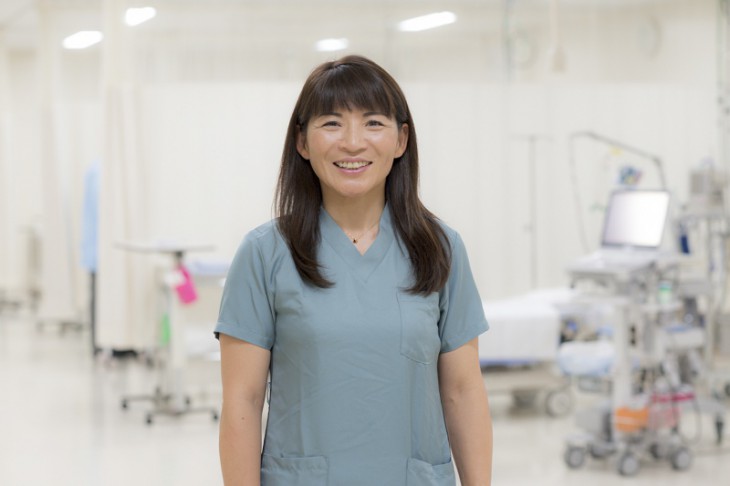
“My biggest goal is to prevent mountain climbers from suffering accidents,” Ohshiro says.
Photo: KAWAMURA Isao
Ohshiro in 2010 became the first Japanese person to acquire the UK Diploma in Mountain Medicine, recognized by the Union Internationale des Associations d’Alpinisme (UIAA; known in English as the International Mountaineering and Climbing Federation), International Commission for Alpine Rescue (ICAR) and International Society for Mountain Medicine (ISMM). Diploma in Mountain Medicine has technical knowledge about illnesses and injuries that can occur on mountains, such as hypobaropathy, hypothermia and frostbite, and can treat them. Supporting mountaineering teams medically, Diploma in Mountain Medicine require not only knowledge of medical treatment on mountains but also advanced climbing techniques.
Since Ohshiro was a student in medicine, she has been interested in climbing mountains. So extensive is her experience in mountaineering that she has already scaled the summits of Kilimanjaro, the highest mountain on the African continent, McKinley, Manaslu and others. With this rich experience, she took part in Miura’s 2013 Everest project as a team doctor.
In the fall of the preceding year, she joined the preliminary climbing on Lobuche East, which also served as climbing training. The eighty-year-old adventurer Miura suffered chronic arrhythmia and angina pectoris. At a point very close to the summit, near the altitude of 5,500 meters, he suffered an arrhythmic attack. He was just 500 meters below the summit and could have reached it in two days if he had been alright.
At that time, Ohshiro advised him, “Your final goal is to reach the top of Mt. Everest. So you need to descend now and receive medical treatment.” There were just less than four months left before the Everest project. That would not be long enough for effective treatment, but if he went down there would still be some time. Following her advice, he did not hesitate to change his direction.
“Normally, no one wants to give up when the summit is just 500 meters away, but he’s capable of listening to every opinion and accepting them in order to achieve his goal. That is what makes Mr. Miura admirable,” Ohshiro says. After that, Miura underwent medical treatment and two surgeries to overcome his arrhythmia.
Two days after summiting Everest, the day before he returned to the base camp, an icefall gave way. Depending on the weather conditions, some icefalls can be as high as buildings. They are extremely dangerous as they slide and fall. As the spring drew near, the mountain continually changed. The experts in high altitude mountaineering in Team Miura exchanged their views from their own standpoints.
“In that project, there was no moment when I myself perceived danger,” Ohshiro says, “I realize that Team Miura is a group of professionals highly skilled in risk management.”
Everyone on the team supported Miura’s strong resolve to definitely return from the journey alive.
Ohshiro was born in Nagano Prefecture in 1967. As a child, when she saw a doctor treating her mother for rheumatism, she felt a desire to do this job of healing people. After graduating from the Nihon University School of Medicine, she worked for the university hospital aiming to become a general practitioner. When she had some time to spare she went mountain climbing, which exposed her to views she had never seen before as she enjoyed the quiet time just being alone. That was the appeal of mountaineering to her.

In 1998, she took a long vacation to climb Mt. Kilimanjaro. At that time, she began to frequently go to mountains in other countries and felt the desire to give herself a fresh start in a new environment. Four years later, she decided to relocate to Hokkaido, which she had visited several times for skiing and mountain climbing.
However, she remained busy every day there. She wished that she could spare more time treating each of her patients, but the time allotted was limited. Since she was pressed for time, she struggled with being distant from what she thought being a doctor should be like. “It was difficult to think of what I would be like five years from then.” Exhausted by this, she stood at a crossroads.
“I wondered if I should live my life for the sole purpose of striving to build my career.” She wanted to place importance on her private life, specifically on time for climbing mountains. Meanwhile, she also blamed herself, wondering if she just wanted to escape her situation at that time.
She then became interested in mountain medicine. One event was behind this. About six years ago, while trekking in Nepal, she came across a climber who was having health problems, feeling faint at high altitude. She told him to drink water and advised him to take deep, deliberate breaths. She gave him her own water. She later learned that he left the mountain safely, but she questioned whether she had taken the best course of action and if there were anything else to be done.
This made her highly eager to study medical treatment on mountains and she then learned that there is Diploma in Mountain Medicine. At that time, no such qualification could be obtained in Japan and she went to the United Kingdom to receive training and acquire rescuing skills for use in mountainous areas. She graduated in 2010.
“I want to save as many lives on mountains as I can,” she says.
In the same year, she launched a mountain medicine clinic at her workplace — the Cardiovascular Center Hokkaido Ohno Hospital. There, she performs prior and ex-post-facto medical checkups for climbers to find any latent diseases that may develop during climbing, and gives advice and guidance for prevention. In addition to providing information on the Mountain Medicine Information Website, she began awareness-raising activities for accident prevention.
Ohshiro also acts as a mountain rescue advisory doctor for the Hokkaido Prefectural Police. She is the first such medical doctor employed by a local government. Japan’s mountain rescue teams have advanced rescue skills and a long history. However, amid the growing popularity of climbing among the middle-aged, elderly and young, and the diversification of mountaineering styles, the Hokkaido Prefectural Police Mountain Rescue Team was a pioneer in the country in seeking guidance and advice from a medical standpoint. Efforts have started to improve the number of lives that are saved. Ohshiro also runs first aid workshops for climbers and works for the mountain clinic in the summer, as she takes on tasks in wide-ranging situations.
“I have a pile of things I need to do for mountaineering safety,” she says, and her serious glance shows no hesitation.
Translated from “Yamade Sukueru Inochi wo Hitoridemo Ooku Sukuitai (Hoping to Save as Many Lives on Mountains as Possible),’’ Kangaeruhito, Winter 2014, pp. 54-55. (Courtesy of Shinchosha Publishing) [December 2013]
